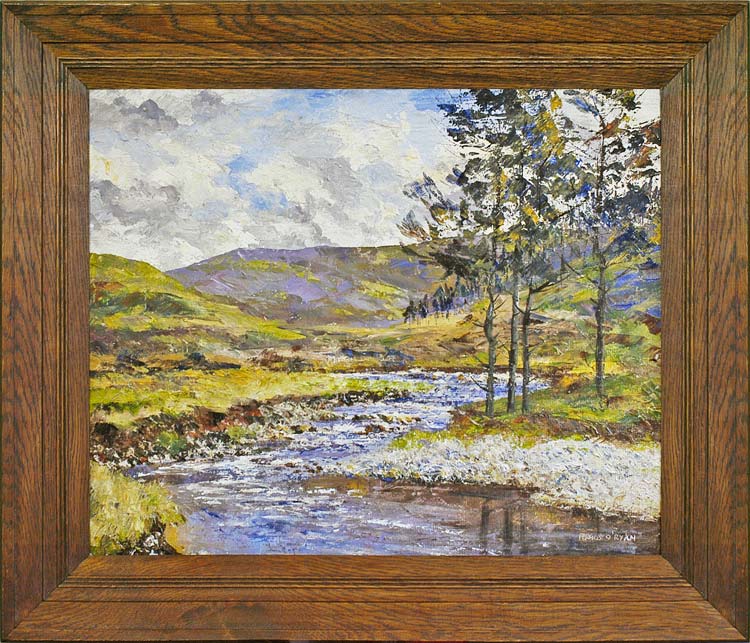O’Ryan’s work is firmly rooted in Ireland, hymning not only its wild, unpeopled landscapes, but also its urban scenes (Georgian townhouses, municipal buildings, bridges, shops) and even industrial settings. This scene of the River Liffey winding amongst sunlit hills near its source in Co. Wicklow contrasts strongly with a painting of the Liffey near its mouth: Smith and Pearson steelworkers on the Liffey Quays, Dublin. O’Ryan’s style is painterly and blocky, varying from impressionistic or highly-finished to strongly expressionistic. He is particularly skilful at evoking the transparency and reflective qualities of water, using it – as here – as a feature of the foreground, to lift and animate the painting.
Biographical details
Fergus O’Ryan (1911-89) was a native of Limerick, and attended, first, the Limerick School of Art, and second, the Dublin Metropolitan School of Art. His work was exhibited at the Royal Hibernian Academy of Ireland from 1938 to 1984, and he was elected an associate in 1959, becoming a full member in 1960; the Fergus O’Ryan RHA Memorial Award was set up in his memory in 1993. From 1955-69 he exhibited at the Watercolour Society of Ireland. He won the prestigious Douglas Hyde Gold Medal at the Oireachtas Exhibition, Dublin, in 1956.
O’Ryan taught at the National College of Art & Design, Dublin; he illustrated Tales of Enchantment, Patricia Lynch, 1952; and he created a design for postage stamps in 1953 which were produced in different colours for different denominations, all celebrating An Tóstal, the spring cultural festivals held across Ireland from the early 1950s-mid 1960s.
Works in public collections include Christ Church Cathedral, Dublin (Boston, Fogg Art Museum); other works are in the Crawford Municipal Gallery and the Hugh Lane Municipal Gallery.


